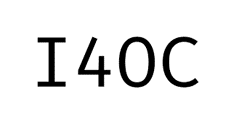About psychosocial vulnerabilities and strengths psychosocial
Keywords:
disruptive impact, significant links, humorAbstract
This article aim to describe the psychological work associated with events that could produce a disruptive impact and collapse the responsiveness of organisms. Emphasis is given to the rigorous care required in conducting assessments from a pre-diagnostic linear reading in relation to emotional and material impact. Hence, the importance of the containment capacity and primary bras, which will define the significant primary links, is highlighted. In the same line, solidarity and community participation are highlighted as nerve-wracking, generating significant links that will face destructive paths. Thus, the advantages of prevention for the whole process of Disaster Risk Integral Management and the participatory elaboration of the Local Risk Map are highlighted as an important integral and integrated Preventive Psychosocial Strategy. Finally, the work of humor is raised as a resource of excellence to regulate stress, suffering, self-esteem crises, frustrated experiences and even the sinister.
References
Andruetto, M. (2012). Cacería. Buenos aires: Editorial Babel.
Benyakar, M. (2003). Lo disruptivo. Buenos Aires: Editorial Biblos.
Berenstein, I. (1976). Familia y enfermedad mental. Buenos Aires: Paidós.
Castellan I. (1983). La familia: del grupo a la célula. Buenos Aires: Kapeluz.
Freud, S.(1928). El humor. Tomo III. Obras Completas. Madrid: Editorial Biblioteca Nueva.
Falú, A. (2011). Restricciones ciudadanas: las violencias de género en el espacio público. Pensamiento Iberoamericano 1(9), 129-146.
Freud, S. (1968). El chiste y su relación con lo inconsciente 1905. Tomo I. Obras Completas. Madid: Editorial Biblioteca Nueva.
Kaës, R., Enriquez, M., Faimberg, H. y Barane,J. (1996). Transmisión de la vida psíquica entre generaciones. Paris: Amorrortu editores.
Le Bretón, D. (1995). Antropología del cuerpo y modernidad. Buenos Aires: Ediciones Nueva Visión. Recuperado de http://mastor.cl/blog/wp-content/uploads/2015/08/LE-BRETON-D.-Antropologia-Del-Cuerpo-y-Modernidad.pdf
Naciones Unidas (2008). La Gestión del Riesgo de Desastres. Recuperado de http://bvpad.indeci.gob.pe/doc/cds/CD_eird2008/index.html
Naciones Unidas (2012). Documento Técnico Elaborado por el Programa de Naciones Unidas para el Desarrollo (Pnud) para la VI Cumbre de las Américas. Reduciendo los Riesgos y Atendiendo los Desastres en las Américas. Recuperado de http://www.scm.oas.org/idms_public/SPANISH/hist_12/CMBSC00048S04.doc
Freud, S. (1905). Tres ensayos de teoría sexual. Recuperado de http://www.multimedia.pueg.unam.mx/lecturas_formacion/identidad_
imaginaria/Tema_III/Sigmound_Freud_Tres_Ensayos_sobre_la_sexualidad.pdf
Tizón, J. (2005). El humor en la relación asistencial. Barcelona: Herder.
Valero, S. (2006). Psicología en las Emergencias y los Desastres. Lima: Editorial San Marcos.
Winnicott, D. (1972). Realidad y juego. Barcelona: Editorial Gedisa.
Lima B. (1992). La atención comunitaria en salud mental en víctimas de desastres. En Levav, I. (edit.). Temas de salud mental (pp. 218 - 236) Washington, D.C.: Organización Panamericana de la Salud.
Maldavsky, D. (1991). Procesos y estructuras vinculares. Argentina: Nueva Visión.
McDougall, J. (1987). Teatros de la mente.España: Tecnipublicaciones.
De Quiroga, A. (1986). Enfoques y perspectivas en Psicología social. Buenos Aires: Ed. Cinco.
Pichon, E. (1984). Del Psicoanálisis a la Psicología Social. Buenos Aires: Ed. Nueva Visión.
Sluzki, C. (1990). Disrupción de la red y reconstrucción de la red de migración. Revista Sistemas Familiares, 6(2).
Downloads
Published
How to Cite
Issue
Section
License
Copyright (c) 2016 PsiqueMag

This work is licensed under a Creative Commons Attribution-NonCommercial-NoDerivatives 4.0 International License.
You are free to:
- Share — copy and redistribute the material in any medium or format
- The licensor cannot revoke these freedoms as long as you follow the license terms.
Under the following terms:
-
Attribution — You must give appropriate credit, provide a link to the license, and indicate if changes were made. You may do so in any reasonable manner, but not in any way that suggests the licensor endorses you or your use.












